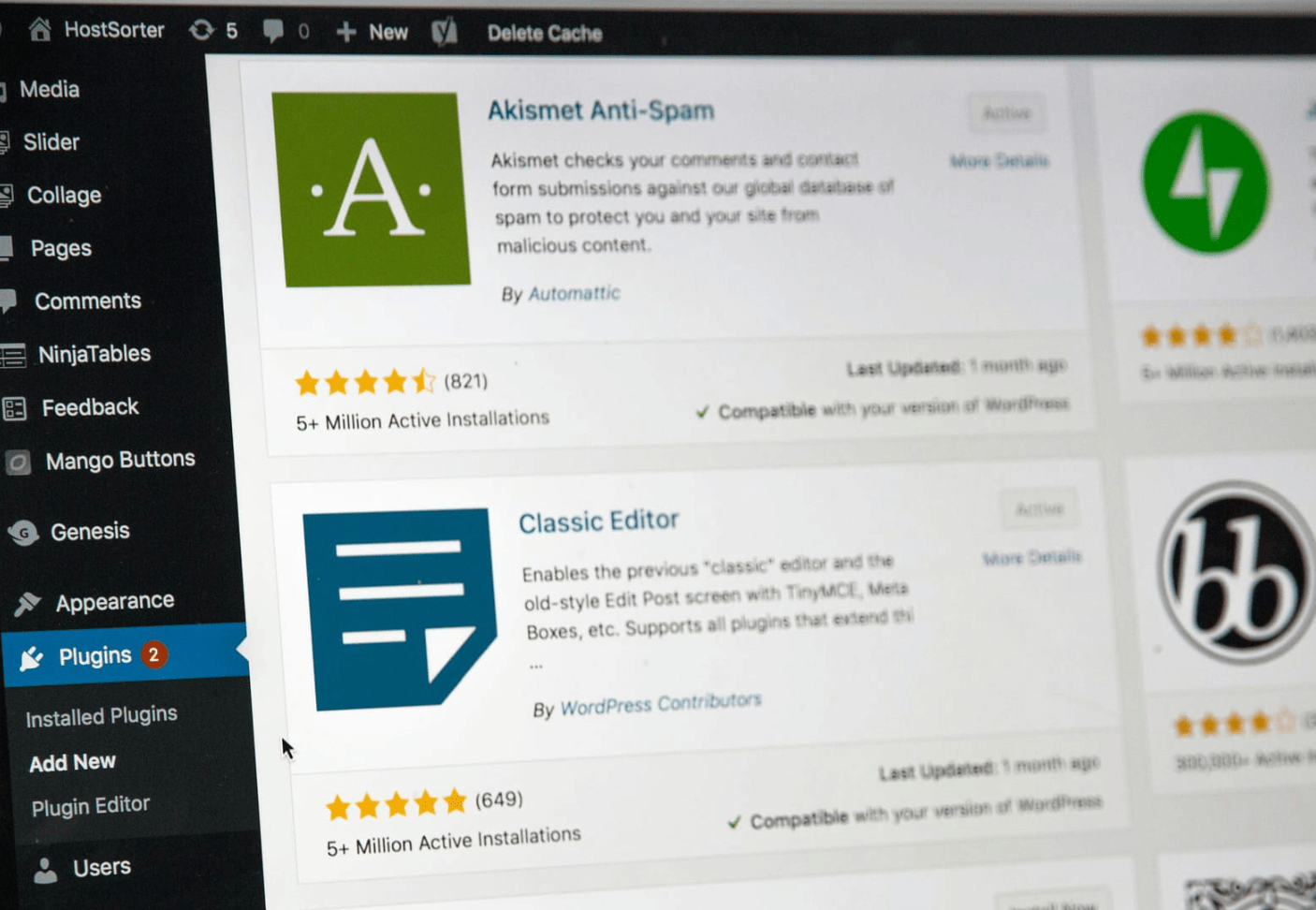10 Best WordPress Automatic Internal Links Plugins You Must Try

Finding effective ways to boost your organic traffic can be never-ending. You write and publish quality content, but the SEO doesn't reward your efforts. If you can relate, you’re not alone. Internal linking is a fundamental SEO technique that can help improve your rankings. However, manually adding them to every post can be tedious and time-consuming, especially when you’re trying to scale your blog with AI SEO content.
This is where WordPress's automatic internal links come in. In this guide, we’ll explore the benefits of using plugins to automatically generate internal links to help boost your blog’s SEO. We’ll also introduce a valuable tool to help you achieve your goals: Journalist’s AI article writer.
What Are Internal Links?

Internal links are any links from one page on your website to another page on your website. Your users and search engines use links to find content on your website. Your users use links to navigate through your site and to find the content they want to find. Search engines also use links to navigate your site. They won't see a page if there are no links to it.
There are several types of internal links. In addition to links on your homepage, menu, post feed, etc., you can also add links within your content. We call those contextual links. Contextual links point your users to interesting and related content. Moreover, they allow search engines to determine what content on your site is related and its value. The more links a significant page receives, the more important it will seem to search engines. Therefore, good internal links are crucial to your SEO.
Related Reading
Check out this comprehensive video tutorial on automated internal linking:
Can You Automate Internal Links On WordPress?
Yes, you can automate internal links on WordPress. Auto internal linking allows you to automatically add internal links to your content based on predefined criteria. You set up rules for the plugin you’re using, and it scans your content to find opportunities to add relevant links.
For example, you might specify that any instance of the keyword “SEO” should be linked to your “SEO Basics” blog post. By defining your criteria carefully and choosing the right plugin, you can ensure that your automatic internal linking adds value to your content.
How Do I Automate Internal Linking In WordPress

There are many plugins available to implement auto internal linking in WordPress. Internal linking plugins for WordPress help you automatically add internal links to your content based on the rules you set up. This helps you save time on SEO and boost your site’s rank and authority.
Here’s a step-by-step guide on how to use this plugin to set up auto internal linking in WordPress:
1. Install and Activate an Internal Linking Plugin
There are many plugins available to implement auto internal linking in WordPress. Internal linking plugins for WordPress help you automatically add internal links to your content based on the rules you set up. This helps you save time on SEO and boost your site’s rank and authority.
2. Configure the Plugin’s Settings
Once activated, go to the Interlinks menu in your WordPress dashboard.
3. Create an Automatic Internal Linking Rule
Click on the AIL submenu from the menu options. Here, you can set up the rules for your auto-internal linking.
4. Name Your Rule
Give your AIL a name, then type in the keyword you want to add a link to and the URL you want to target. You can choose from posts, pages, and custom post types.
5. Adjust The Advanced Settings
Select generic from the Advanced Match section for the left and right boundaries.
6. Set Your Preferences
For each keyword or phrase, you can specify the maximum number of links to be inserted per post and the priority level of the links. The priority level determines the order in which the links will be inserted if multiple options exist for a given keyword.
7. Review Your Internal Links
The plugin will automatically add internal links to your content based on the rules you set up. You can also see a list of all the auto-internal links you have added from the AIL menu.
10 Best WordPress Automatic Internal Links Plugins You Must Try

1. Journalist AI - The Newest "Journalist" on the SEO Scene
Journalist AI is the AI SEO writer who auto-publishes your blog. With Journalists' AI writing, Google indexing, content syndication, "SEO-optimized" writing, content publishing features, and many automations that save you time, Journalist makes it as easy for companies to write high-quality content at scale. Journalist is the best B2B AI writing tool. Sign up today to get 3 free articles from our AI article writer.
2. LinkWhisper - Get Internal Links Suggestions as You Write
Link Whisper is a premium WordPress plugin designed to help automate internal link-building on your site. The plugin is easy to use and works right inside the WordPress editor. Link Whisper suggests relevant internal links as you type your content. It can also help you find orphan pages and posts and suggest links to add. The plugin also gives detailed reports of all the links on your site, including all internal and external links plus broken links. With Link Whisper, you can build strategic internal links quickly, helping to boost your content to the top of the SERPs.
Pros
Build many internal inbound links fast for any post.
Relevant internal link suggestions: Many of the suggested URLs are reasonably relevant.
You don’t have to create links from all the suggestions.
Edit the anchor text: If you’re particular about anchor text, you can edit it.
Low price for the time saved: I’m glad Spencer didn’t price this as a recurring monthly cost. Instead, it’s reasonably priced at an annual recurring fee, typical for plugins when you want updates.
Cons
Does not suggest external link opportunities: This plugin will not suggest external outbound link opportunities. You still have to do this old-school.
It does not build internal inbound links into the article you’re working on: This tool will not create links to the article you’re working on.
It only builds links from the article to other articles on your site.
However, you can go to the main report page, click “Add” for that particular page (or post), and then build a list of suggested inbound links.
3. Internal Link Juicer - Automate Internal Linking With Keywords
Internal Link Juicer is one of WordPress's brilliant auto-internal linking plugins. Using this plugin, you don’t have to interlink related pages when you manually publish a new post. It automatically builds internal links after you configure keywords. It is a proven helpful plugin packed with useful features so you can take control of your internal links.
The internal linking plugin you are using must allow you to control how your internal links are made. Internal Link Juicer's best features are that you can whitelist specific posts on your website, diversify anchor texts, and so much more. The plugin is highly customizable. Internal Link Juicer supports manual optimization, only available on the pro version.
Pros
Automates internal linking process
Varied and natural anchor text
Granular control over links
Detailed analytics for optimization
Cons
Initial setup can be time-consuming
Minor layout impacts on content
The premium version is relatively costly
Requires some learning curve
4. Rank Math - A SEO Plugin with Internal Link Suggestions
Is a plugin for WordPress that can help improve your content. It also has automatic suggestions that are based on an accepted process. It easily customizes necessary SEO settings that control crawlable pages and quickly shows in the search area. The process of optimization starts when you create a post. All the tools for the optimization are placed in the post-creation screen.
Pros
Of course, the biggest is that it is free to use
It helps you fix website issues
User-friendly interface
It will not slow down your website
It integrates with Google Analytics and most other search engines
Provides instant indexing on Bing and Google. Easy to use
Cons
There are some great new features, but it is only available in the paid version and expensive.
It targets primarily long-tail keywords
While the schema editor is great, it is not very customizable
5. AIOSEO - The Best SEO Plugin for WordPress
All-in-one SEO (AIOSEO) is the best SEO plugin for WordPress. Over 3 million people use the plugin to optimize their sites for search engines. The plugin is beginner-friendly and helps you improve your SEO score without technical knowledge. AIOSEO also offers a powerful Link Assistant feature to build better internal links quickly.
It automatically crawls the links on your WordPress website and provides a detailed Link Report. You can see the number of internal, outbound, and affiliate links for each post and page. The plugin also gives you intelligent internal link suggestions based on your existing content to improve your internal linking. You can see which posts it recommend internal linking and the exact phrase or anchor text on which it will create the link. You can then add them to your content with a button.
Pros
Simple and easy to set up.
Easy to edit the title and description.
Advanced tools to control indexing, tagging, and search engine following and turn it off for a particular post and page.
All in One SEO Pack offers lots of features in the free version.
Cons
There is no content analysis or SEO scoring.
All-in-One SEO does not have easy navigation and features for importing data from Google Search Console.
There is no support in the free version of the All in One SEO Pack.
6. MonsterInsights - Track Your Internal Link Data
MonsterInsights is the best Google Analytics plugin for WordPress and is trusted by over 3 million professionals. It offers a Popular Post feature that lets you show your best articles anywhere on your site. You can show your top blog posts within the content using the Inline Popular Post option. The plugin offers different themes you can choose from and customize the color and size of the title, label, and background.
MonsterInsights also lets you select whether to show popular posts based on views, comments, and share count. With MonsterInsights, you can also track affiliate link clicks and outbound link clicks on your WordPress website. This way, you see how people interact with your content and which link they click the most. Other advanced features of MonsterInsights include eCommerce tracking, form conversion tracking, dashboard reports, and more.
Pros
Install MonsterInsights effortlessly on WordPress without any coding skills or technical knowledge required.
Navigate through an intuitive, user-friendly dashboard to access all your important data and metrics seamlessly.
Track website activities without coding hassles. Effortlessly monitor visitors, conversions, eCommerce, forms, videos, and more.
Utilize advanced tracking with compatibility for Google Analytics 4, unlocking new data and features.
Merge Google Search Console and Analytics data for insights into site performance and organic traffic impact.
Cons
An annual subscription at $49 or $199 for a lifetime might be costly for budget-conscious users seeking more economical options.
Tracks up to 10M page views/month, 1000/day for events, form submissions, video plays, and 10 eCommerce transactions/month; upgrades essential for expanded features.
Reports of site slowdown due to MonsterInsights potentially loading additional scripts or cookies, affecting performance.
7. YoastSEO - The Internal Link King
Yoast isn’t just a set of meta descriptions that greenlight your target keyword type. Your homepage is the most essential part of your website. Your homepage will rank up, but you must still convince readers that a click is worth a while. It has a premium account that has automated suggestions of internal links based on the content of your posts. The more you write, the more you’ll see link suggestions that will pop up in the Yoast Internal Linking sidebar in the WordPress Editor.
Pros
The plugin helps users optimize their website for search engines by analyzing content for keywords, meta descriptions, and other on-page elements, which can lead to higher rankings in search results.
By improving search engine rankings, Yoast SEO can help increase website traffic.
Yoast SEO provides an easy-to-use interface that guides users through the optimization process, making it accessible to users of all skill levels.
Yoast SEO offers advanced functionality such as XML sitemaps, readability analysis, social media integration, breadcrumbs, and support for multiple languages.
Yoast SEO is GDPR compliant and does not collect personal data.
Cons
Slow down website: Installing too many plugins can slow it down. Yoast SEO is a well-coded plugin, but it can still add some extra load to the website, which can be an issue for sites with low hosting resources.
Limited Support for Custom Post Types: Yoast SEO may not support custom post types, which can be a problem for users with many custom post types on their websites.
Premium version only offers extra features: The free version of the Yoast SEO plugin offers a lot of functionality, but the premium version offers additional features, such as the ability to connect multiple keywords and a redirect manager.
False sense of security: The Yoast SEO plugin may give some users a false sense of security. They may believe that simply installing the plugin and following its recommendations is enough to achieve top search engine rankings, which is not always true.
8. Interlinks Manager - Manage Your Internal Links
Interlinks Manager is a WordPress plugin that can help you build the interlinking structure of your WordPress content. This will increase your visitors, readers, page views, product sales, and affiliate sales. It has many features that make this plugin better than the others. You can find many plugins on the internet, but they all work the same.
Pros
User-friendly interface that is easy to navigate and use.
Comprehensive link analysis and optimization features.
Ability to automate the link-building process, saving time and effort.
Compatible with various WordPress themes and page builders.
Cons
The plugin is premium, and there is no free version available.
Some users may require time to understand all the features and functionalities.
9. YARPP - Automatically Link Related Posts
Yet Another Related Posts Plugin, or YARPP, is a highly recommended and commonly used WordPress plugin. What it does is simple: it creates a section at the bottom of your blog posts, where it links to other blog posts on your site. You can configure it within some limits, and it will show the preview image, title, and description of the articles it links.
YARPP is automated by using an algorithm to decide what content it links to from what other content. It primarily uses data from categories and tags to do this, so it's not very sophisticated, but it still works decently. It's also one of the oldest free plugins with active development without changing its core focus.
Pros
YARPP uses a built-in algorithm to find related posts.
It has a great template system, allows for thumbnails/text display, supports custom post types, and has an RSS feed display.
Cons
YARPP is not compatible with the WPML plugin.
10. Breadcrumb NavXT - A Simple Internal Linking Plugin
Like YARPP, NavXT is one of my most highly recommended plugins for any WordPress site. It makes internal links, but not in the way you might think. Look at the top of my blog post; you will see the links with Home > Blog > Category > Title. Those are breadcrumbs. They're a simple static internal link (so Google can index it quickly) and excellent user navigation.
The plugin is automatic (you don't need to insert breadcrumbs every time) and contextual because it pulls the category and title of the post, and it's free. It won't significantly impact your SEO or user retention, at least not right away, but there's approximately zero chance that it can hurt you to use it, so it's a 100% win to install it. It is assumed that you don't already have breadcrumbs set up with a different plugin.
Pros
Easy to use
Works automatically
Cons
It lacks advanced features that are present in other SEO plugins.
Related Reading
Why Are Internal Links Important For SEO

1. Enhance User Navigation
Internal linking creates a connected network of articles, making it easier for visitors to navigate your website for specific information. This process helps improve user experience and keep visitors on your site longer.
2. Help Google Crawl Your Website
Internal links are essential for helping Google bots crawl your website. The more internal links you have pointing to a page, the easier for Google to find and index that page. This process helps improve visibility for the page's target SEO ranking keywords.
3. Increase Average Time on Page
Internal linking creates a better user experience by allowing visitors to find related content on your website easily. This process encourages them to explore your site further, increasing the average time on the page and, ultimately, the average time on the site.
4. Reduce Bounce Rate
Internal links can also help decrease your site's bounce rate. When users click on an internal link, they are directed to another page on your site instead of exiting it altogether. Lowering your bounce rate tells Google that your site is reliable and informative, which can help improve your rankings.
5. Support Your Marketing Goals
Internal links can help you direct your visitors to specific pages on your site to support your business goals. For instance, if you have an e-commerce site, you can write blog articles that target your customers' pain points. By including internal links in these articles, you can guide your readers to product pages that offer solutions to their problems.
6. Distribute Page Authority
Every page on your website has a certain level of authority that contributes to its ability to rank on search engine results pages. An internal linking structure helps redistribute this authority across your site to improve your SEO.
7. Improve SEO and Rankings
Internal links are critical for effective SEO. They help establish a clear hierarchy for your website and signal which pages are the most important to search engines. This structuring improves the likelihood of all pages ranking on search engine results pages.
Looking to improve your blog's SEO with AI? The journalist uses artificial intelligence to write SEO-optimized content that ranks on Google and auto-publishes to your blog. Sign up today to get three free articles from our AI article writer.
Get 3 Free Articles from Journalist AI's AI Article Writer Today
Journalist AI is the best B2B AI writing tool. With Journalist AI's writing, Google indexing, content syndication, SEO-optimized writing, and many automations that save you time, Journalist makes it as easy as possible for companies to write high-quality content at scale. Sign up today to get 3 free articles from our AI article writer.
Related Reading

Generate, publish, syndicate and update articles automatically
The AI SEO Writer that Auto-Publishes to your Blog
-
No card required
-
Articles in 30 secs
-
Plagiarism Free
